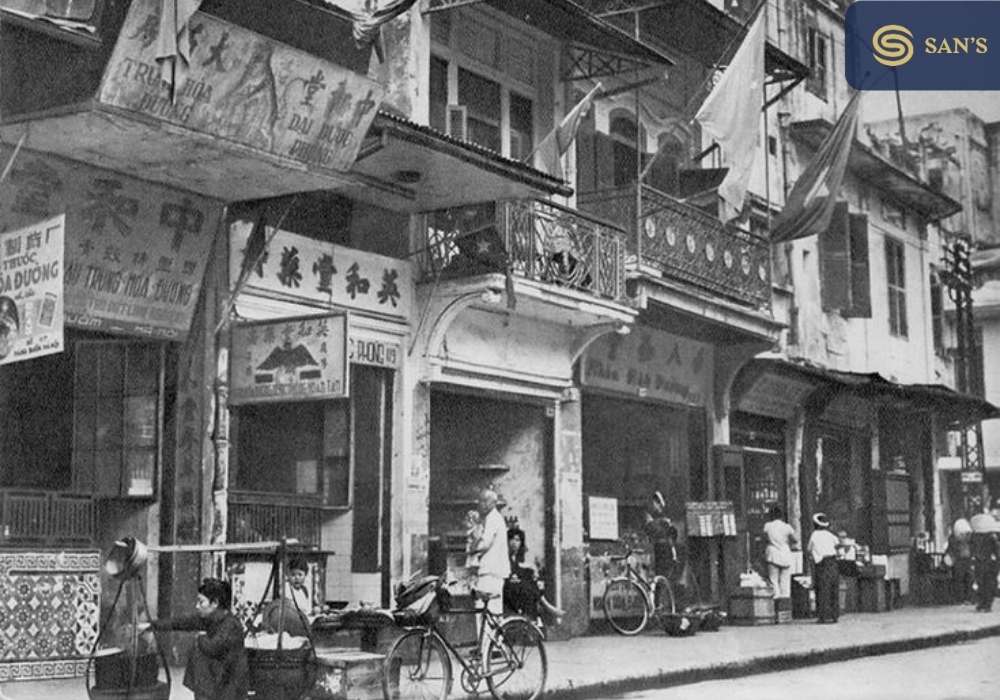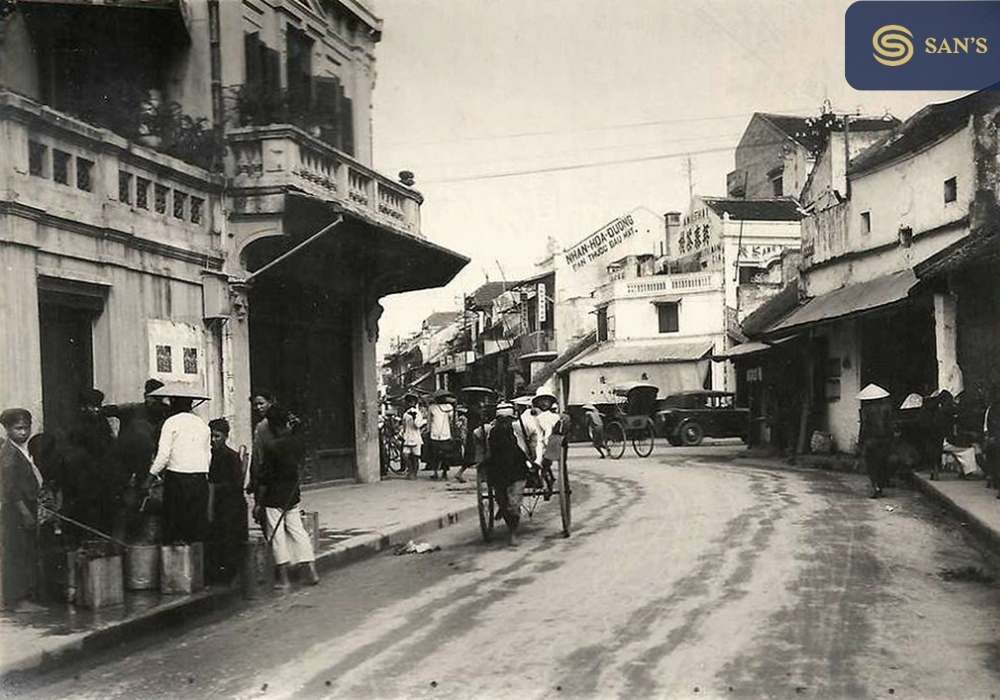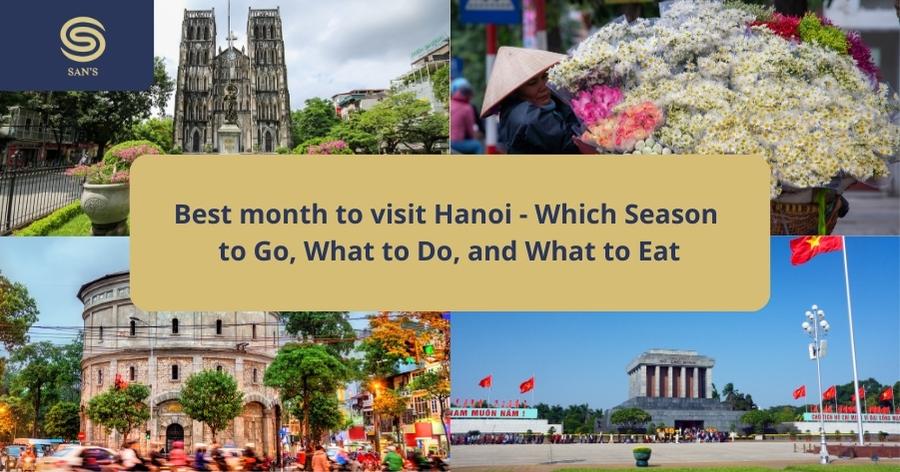Hang Buom Street
Hang Buom Street Hanoi, once a significant part of the Ha Khau award, also known as Giang Khau, is strategically located in the Tong Huu Tuc of Tho Xuong District, where the river flows into the To Lich River. Although the estuary has been filled, the street remains and continues to be a bustling hub of activity.

Historically, Hang Buom was not the primary focal point for the Chinese community; instead, they were concentrated in Viet Dong Street (now known as Hang Ngang) and subsequently expanded into several neighboring cities such as Hang Bo and Phc Kien Street (now Hai Thuong Lan Ong Street).
This introduction sets the stage for a deeper exploration of the historical, cultural, and commercial significance of Hang Buom Street, not only as a trading center but also as a symbol of the historical evolution of the region, influenced by the Chinese community and neighboring streets.
Historical Background of Hang Buom Street
Expansion of the Chinese Community in Hang Ngang and Influence on the Whole City:
By the 19th century, the Chinese community in Hang Ngang had grown significantly and began to expand its influence over the broader city landscape. Their socio-economic impact was profound, transforming the local markets and creating a ripple effect that altered the very fabric of Hanoi’s commercial and cultural life. This expansion culminated in a more significant Chinese influence over several areas, including Hang Buom, which became something of a Chinatown by the late 1800s.

The Quang Dong Club-house and its Transformation into a Nursery School:
One of the most distinctive landmarks during this period of Chinese influence was the Quang Dong club-house, located at number 32 Hang Buom Street. Characterized by its green glazed tiled roof and unique small ceramic statues, this establishment was a social and cultural epicenter for the Chinese community. Over time, as the demographic makeup of the street evolved, the Quang Dong club-house was repurposed into a nursery school, signaling both continuity and change in the community.
The Formation of the Dong Xuan Market from Bach Ma and Cau Dong Markets:
Adjacent to the renowned Bach Ma Temple (or White Horse Temple) was the Bach Ma Market. Alongside another local trading point, the Cau Dong Market, these two commercial hubs eventually merged to form what we know today as the Dong Xuan Market. This consolidation represents not just the growth of commerce but also the increasing unification of separate, yet closely related, spheres of economic activity in the area.
The French Colonial Influence and the Renaming of the Street:
During the French colonial period, Hang Buom Street underwent yet another transformation. Known as “Rue des Voiles” under French rule, the name was eventually translated into Vietnamese as Hang Buom. After the independence of Vietnam in 1954, the street was officially named Hang Buom, symbolizing a fusion of Vietnamese tradition and French colonial heritage.
Hang Buom as a Commercial Hub
- The Types of Products Sold Historically on Hang Buom Street:
Historically, Hang Buom Street was known for its specialized trade in sails and woven goods. The street was once filled with vendors selling various types of sails made from fabric or woven rush, essential for the boats that navigated the region’s waterways. Other related products included equipment, bags, and blister sails woven from rattan and rush. These raw materials were transported by boat to the city, and the finished products were then distributed to other regions. This specialized trade made Hang Buom Street a crucial commercial hub for the region’s maritime activities.

- The Transformation of the Street:
However, as the Chinese community began to dominate the street, the nature of the trade there started to change. The once thriving marketplace for sails and woven goods gradually disappeared, making way for a new era of commerce. The Chinese community brought with them different trades and culinary traditions, leading to the opening of more restaurants on the street. This transformation marked a significant shift in the economic activities of Hang Buom, from a specialized marketplace for maritime goods to a bustling street filled with eateries.
Chinese Influence and French Arrival
The Early Presence of Chinese Businesspeople and the Transformation into a Chinatown:
Documents from the period indicate that Chinese businesspeople were present in Hang Buom from a very early stage, likely from the 19th century. Over time, this presence grew, and the street transformed into a bustling Chinatown. The Chinese community brought with them their own traditions, trades, and cultural practices, influencing the local Vietnamese way of life and contributing to the development of the area as a commercial hub.

The Arrival of the French in 1872 and the Impact on the Chinese and Vietnamese Communities:
The arrival of the French in 1872 brought about significant changes to Hang Buom and its surrounding areas. The Chinese community in Hang Buom was particularly crowded at this time and had its own Association of Management.

However, the French presence led to tensions, as many Chinese merchants defied the court’s law by secretly trading with French traders and acting as spies. Between 1873 and 1882, Hanoi witnessed several wars, with the French invading more than twice, leading to arson and looting, particularly targeting the Chinese community in Hang Ngang and Hang Buom. Despite this, Hang Buom remained a bustling, crowded marketplace.
The Resistance Against the French and the Dual Role of Hang Buom Street:
During the resistance against the French, Hang Buom Street played a dual role as both a combat zone and a commercial area. Even during the first 60 days of resistance against the French, the area served as a place for combat as well as “non-military” activities.
The Resistance Committees Area I allowed Chinese overseas trade stores to remain open, making Hang Buom the only place in Hanoi with bustling service activities during this period. Moreover, one of the two military medical stations of inter-region I was located at 26 Hang Buom.
Hang Buom Today
The Variety of Products and Foods Available on Hang Buom Street Today:
Today, Hang Buom Street is a bustling hub of activity, offering a wide variety of products and foods. While the street has undergone significant transformations over the years, it continues to be a vibrant commercial center. Shops sell candy, melon seeds, pumpkin seeds, and an array of dishes such as roast meat, noodles, and salads. Additionally, there are plenty of options for beverages, including beer and soft drinks.
The Mid-Autumn Festival as a Busy Period for the Street:
The Mid-Autumn Festival is a particularly busy time for Hang Buom Street. While the Chinese community is no longer present in the area, the festival still draws large crowds, and the street is bustling with activity. Shops and food vendors line the street, creating a lively atmosphere that attracts both locals and tourists alike.
The Absence of the Chinese Community but the Continued Bustling Activity of Shops and Food Vendors:
While the Chinese community that once dominated Hang Buom Street is no longer present, the area continues to thrive as a commercial center. The street is lined with shops and food vendors, and the alleyways connecting Hang Buom to Hang Giay, Ta Hien, and Ma May Streets are filled with activity. The bustling atmosphere is a testament to the street’s enduring commercial vitality, despite the significant changes it has undergone over the years.
Hang Buom Street holds a special place in the heart of Hanoi and its inhabitants. Its rich history, from its early days as a bustling marketplace, through the significant influence of the Chinese community, the arrival of the French, and its role in the resistance, to its current status as a commercial hub, is a testament to its enduring significance. The street has witnessed countless transformations, yet it has managed to preserve its unique character and cultural heritage.
Today, it continues to be a vibrant commercial center, offering a wide variety of products and foods, and attracting both locals and tourists alike. The preservation of religious and revolutionary relics, such as the Bach Ma Temple, Long Do Temple, and Tu Duong Communal House, contributes to its unique character and serves as a reminder of its rich history.
For the people of Hanoi, Hang Buom Street is not just a commercial center, but a place to reminisce about the past and immerse oneself in the ancient space characteristic of Hanoi – 36 Streets. It is a living testament to the city’s resilience and adaptability, and its continued significance in the cultural landscape of Hanoi.
Booking Hotel to Enjoy Hanoi HERE





